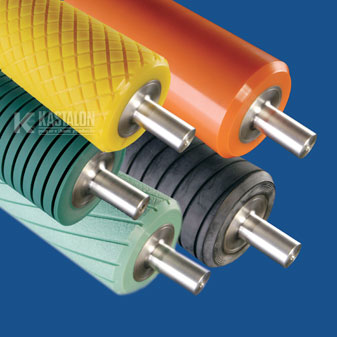When designing a roller assembly it is critical to take into consideration the actual application and environment that rollers will be operating in. Although the drawing might be accurate, it is essential to involve your roller manufacturer in the design phase to assist in choosing the right polyurethane compound that the roller will be covered with. Not all polyurethanes are the same, but understanding how the roller is going to be used and where the roller will be located, is essential in choosing the right material that will result in the best performance.
To avoid over engineering a roller assembly, which can affect the cost and lead time, the roller manufacturer can help choose the proper material with adequate tolerances for the specific application being planned. For example, calling out a very tight tolerance can drive up the cost of the roller unnecessarily.
This is where Kastalon can help.
Recently, a customer gave us a drawing for a new roller assembly for a new process. The engineers called out a TIR of .005. After several months of receiving the rollers as requested, they sat down with us and shared their concern that the cost of the rollers was negatively impacting their ability to sell their new system. Once they shared the actual application and environment with our design engineers it was determined by opening up the tolerance to .015, the cost could be reduced by more 20% with no effect on quality, life expectancy or system efficiency. The lead time was also significantly reduced and the outcome was the customer’s ability to deliver their new system at a lower cost and a reduced lead time.
We like to think that having us on your design team is a win, win proposition!

